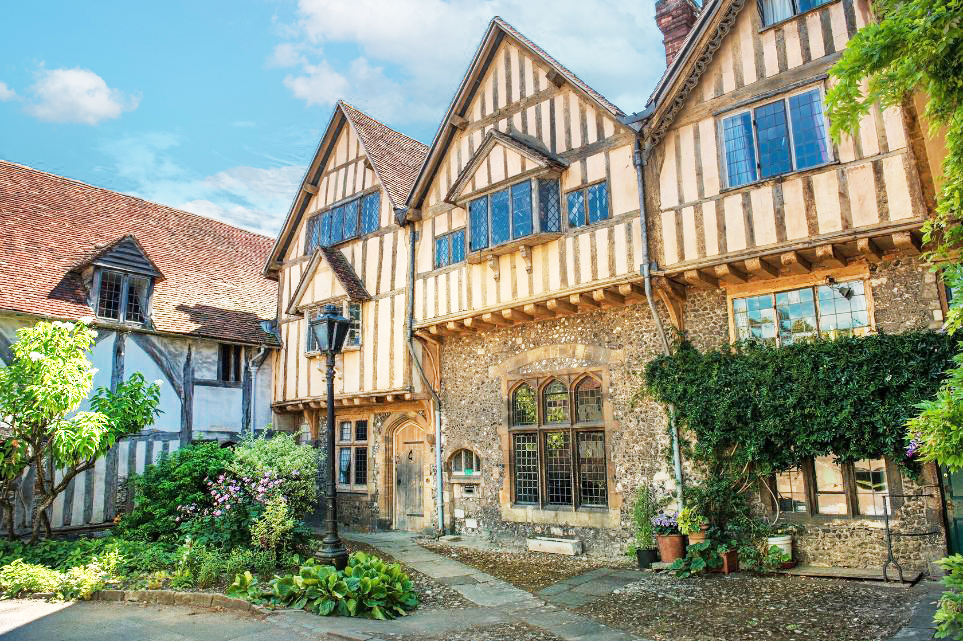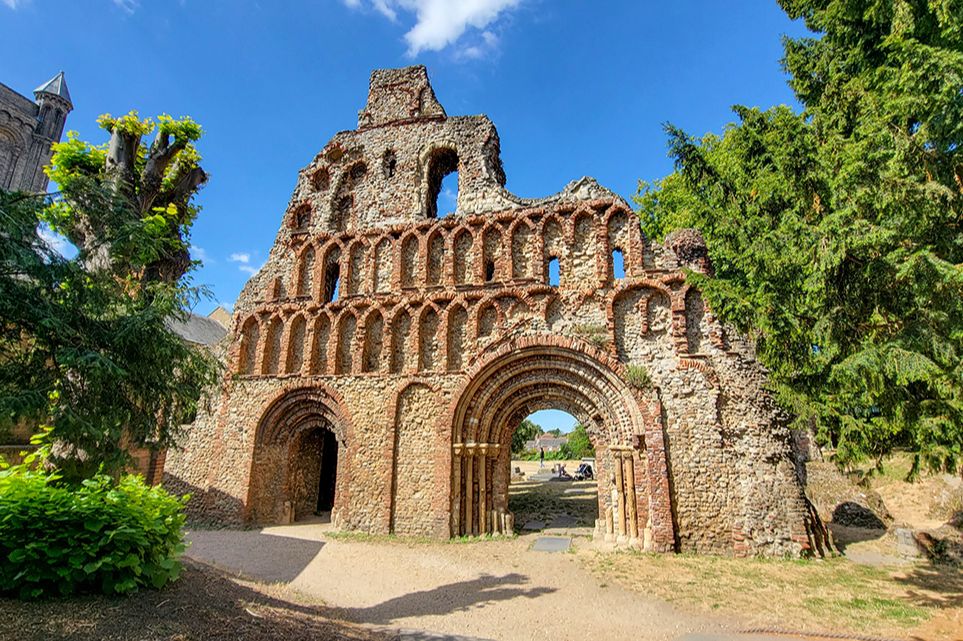
Colchester is the oldest recorded town in Britain. It was the capital of southeast England when the Romans invaded over 2,000 years ago. While it may no longer be quite the powerhouse city it once was, it still has plenty to offer its visitors.
If you plan to visit Colchester, you are in for a treat. Let me share the best things to do there so that you can make the most of your time there.
History of Colchester
The history of Colchester goes back further than Roman times, starting with the Iron Age fortress called Camulodunon, meaning God of War. When the Romans conquered the area, many people in Colchester were forced to work to build the town, which caused resentment. This fueled the rebellion in AD60, which burned Colchester to the ground.
As the Roman Empire began to fade, the town became visibly smaller. Then, in the 5th century, Anglo-Saxon settlers were defeated by the Danes, and the area fell under Viking control. The English armies recaptured Colchester in 917.
In 1066 the Normans invaded, and the work began on Colchester Castle and several significant religious buildings, including St. Botolph’s Priory and St John’s Abbey. It wasn’t until the Second English Civil War in 1648 that a large Royalist army entered Colchester and damaged many of the town’s most ancient monuments, like St. Mary’s Church and the Gate of St. John’s Abbey.
During the 18th century, the once booming cloth trading town of Colchester dwindled to being a market town where agricultural produce was bought and sold. When the agriculture market declined, Colchester was able to pick up again due to the industrial revolution by making machines such as steam engines.
It has become an archeologist’s dream, with several Roman sites being discovered. In addition, since Colchester Castle was converted into a museum in 1860, many other museums and historical sites have opened to the public. As a result, it’s again a thriving town with lots to offer visitors.
Things to Do in Colchester
Colchester Castle Museum
Built over 900 years ago on the foundations of a Roman Temple of Claudius by William the Conqueror is the Colchester Castle, the largest Norman keeps in all of Europe. Inside the castle is a museum with extensive documents of Colchester’s rich history from the Iron Age to the modern day.
Here you will find collections of Celtic coins, a vessel from the Bronze Age, preserved Roman statues, medieval paintings, and ancient war armor. Here are some other interesting highlights:
- The Sheepen Cauldron is the earliest known bronze cauldron from Britain.
- The Middleborough Mosaic was created in the middle of the 2nd century.
- The Colchester Vase is the most famous pot from Roman Britain.
Throughout its history, the castle has served as a prison. Tour the dungeon where the first recorded prisoner stayed in 1226. Thousands of convicted criminals, prisoners of war, and martyrs were held here. It was also used as a base to interrogate women accused of witchcraft during the English Civil War.
- Hours: Monday – Saturday, 10 am – 5 pm; Sunday, 11 am – 5 pm
- Admission: Adult £10
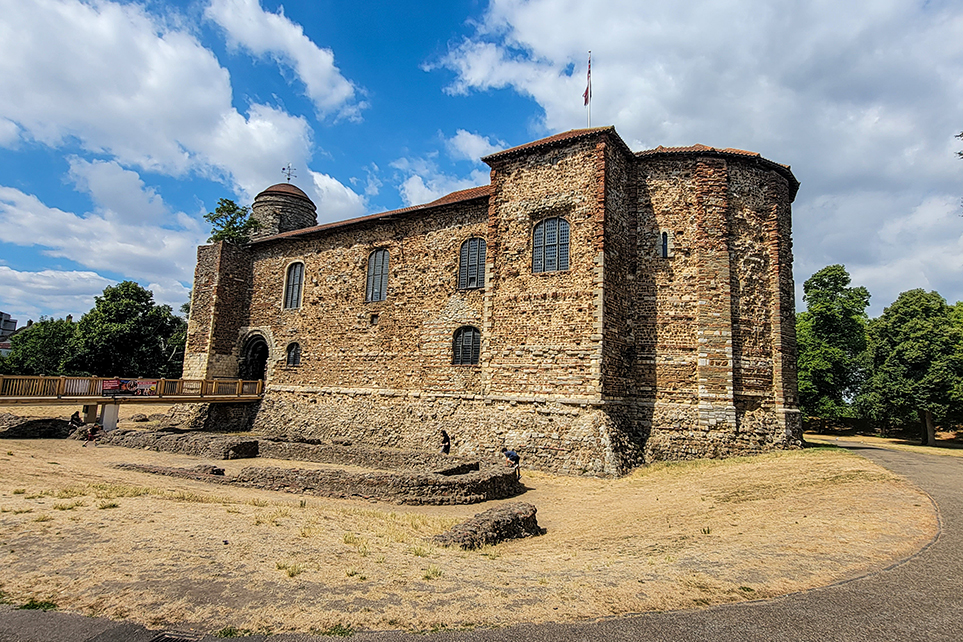
Castle Park
Make sure to take a stroll through the Castle Park, which surrounds Colchester. The park covers 11 acres, and the Roman wall divides it into an upper and lower park. Its picturesque river flowing past, lined by weeping willows and park benches, offers the perfect spot to picnic or sit with your thoughts.
Be sure to end your walk at the riverside cottages; the row of pink Tudor houses opposite the River Colne, just next to North Bridge are so photogenic.
The park is also home to various music concerts and festivals throughout the year.
- Hours: Every day from 7.30 am – 6.30 pm
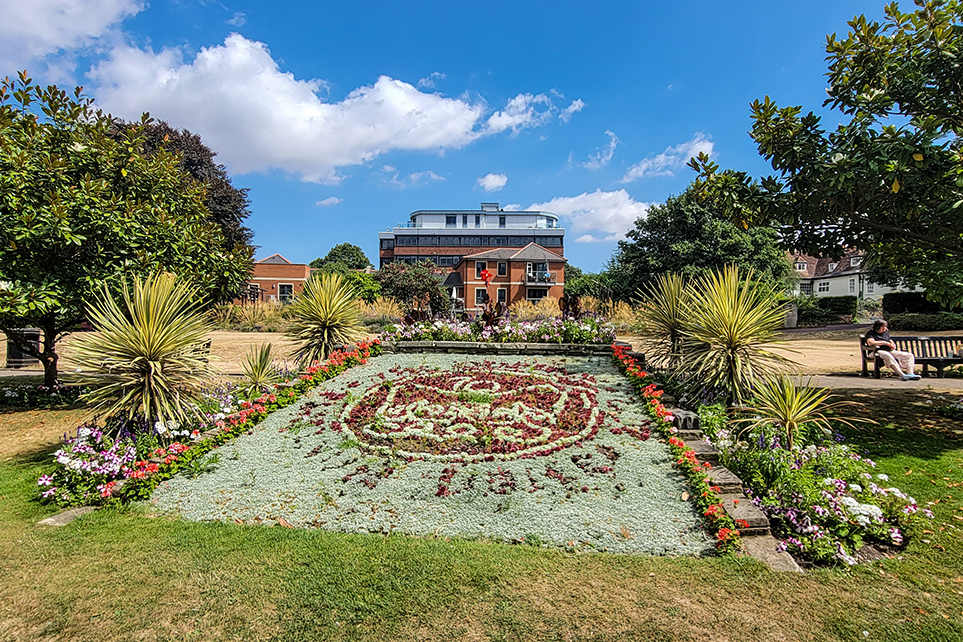
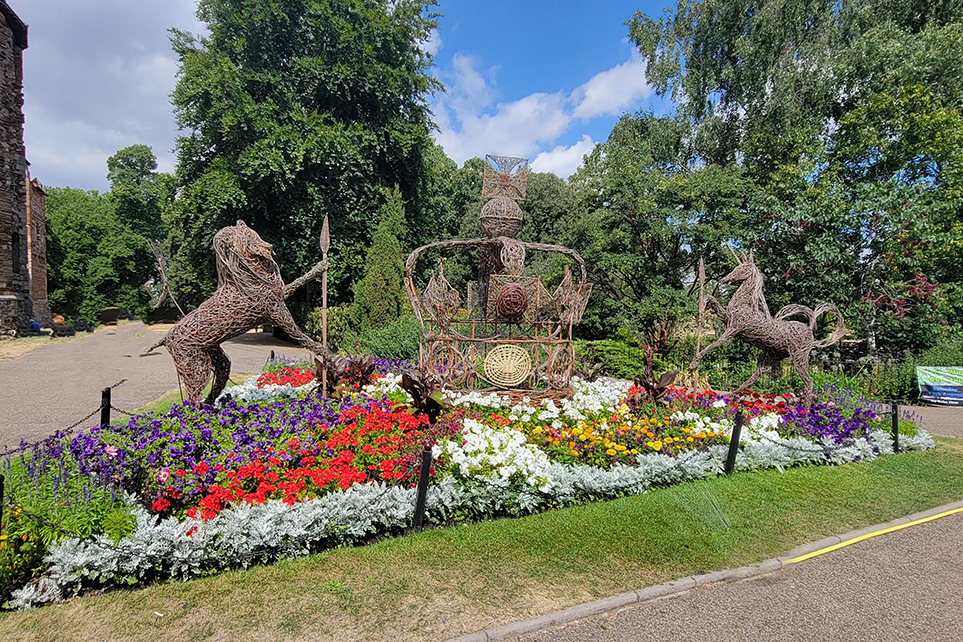
Hollytrees Museum
Don’t miss out on the Hollytrees Museum, located on the beautiful grounds of Castle Park. The museum has a range of collections, including toys, art, domestic items, and Bernard Mason’s collection of clocks made in Colchester. In addition, one of the galleries holds temporary exhibits, so there is always something new to see every time you visit.
- Admission: FREE
- Get more information here.
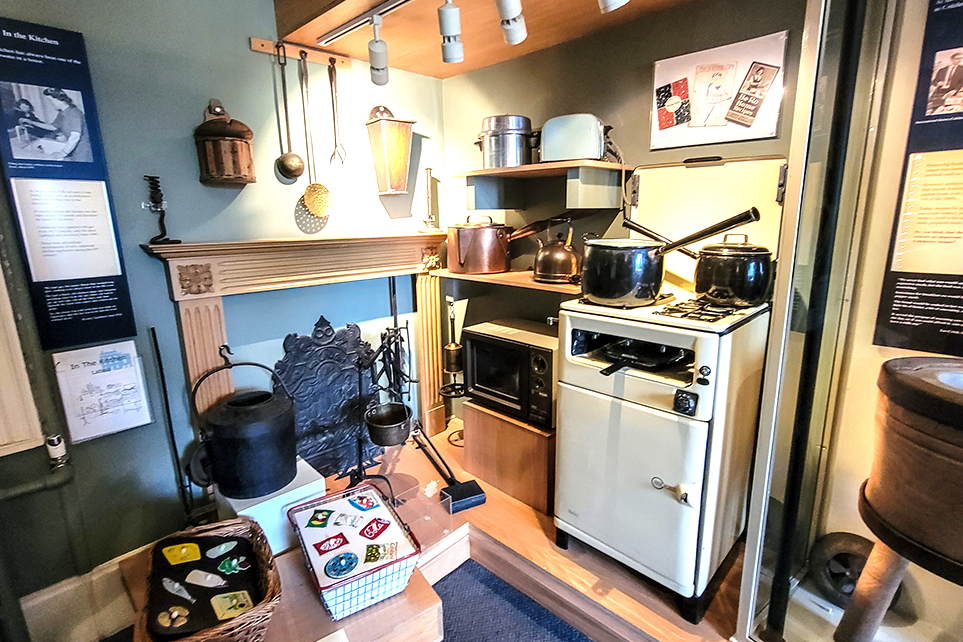
Colchester War Memorial
Colchester’s signature landmark is the War Memorial, which is linked to WWI, WWII, and post-war conflicts after 1945. It was unveiled in 1923.
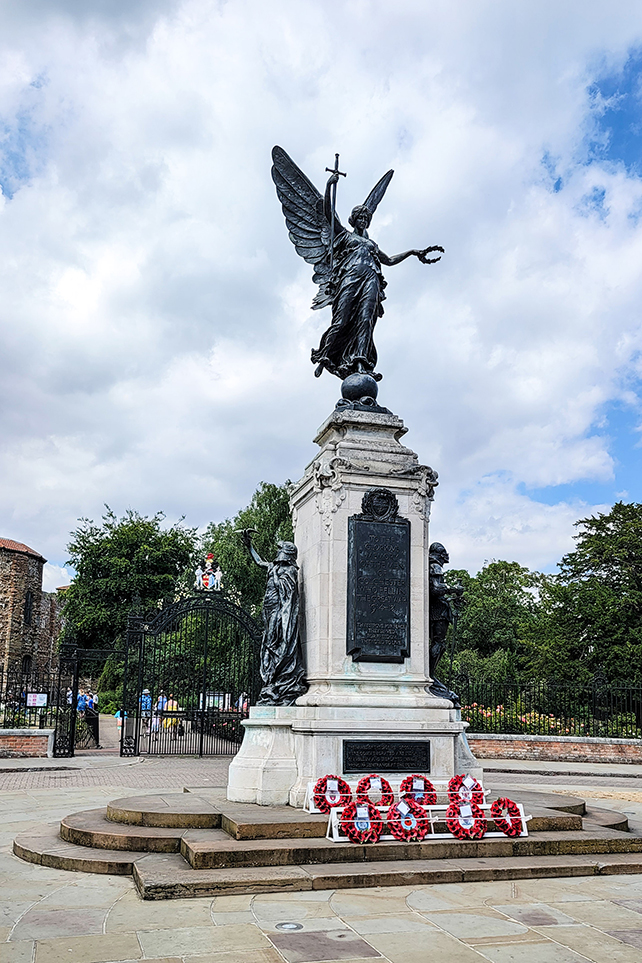
Natural History Museum
The Natural History Museum is housed in the former All Saints Church, across from Colchester Castle. Here you will find a collection focused on Britain and north-east Essex. Get close to nature and explore the Natural History collections focusing on wildlife that inhabited the area.
- Hours: Tuesday – Friday 10:00 -13:00, 14:00 – 17:00; Saturday – Sunday 10:00 – 13:00, 13:30 – 17:00
- Admission: FREE
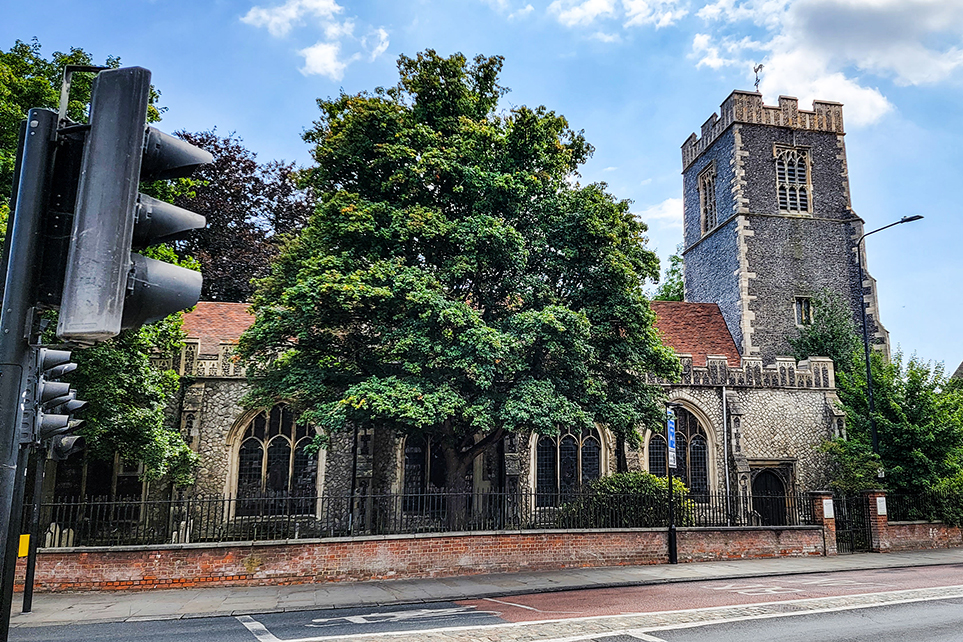
Historical Buildings
Colchester is a town made for walking. Look up plaques in the streets and buildings, noting key features about an area or a house.
Colchester is an eclectic building style with prominent wood-faced Tudor style, Georgian architecture, and red brick towers.
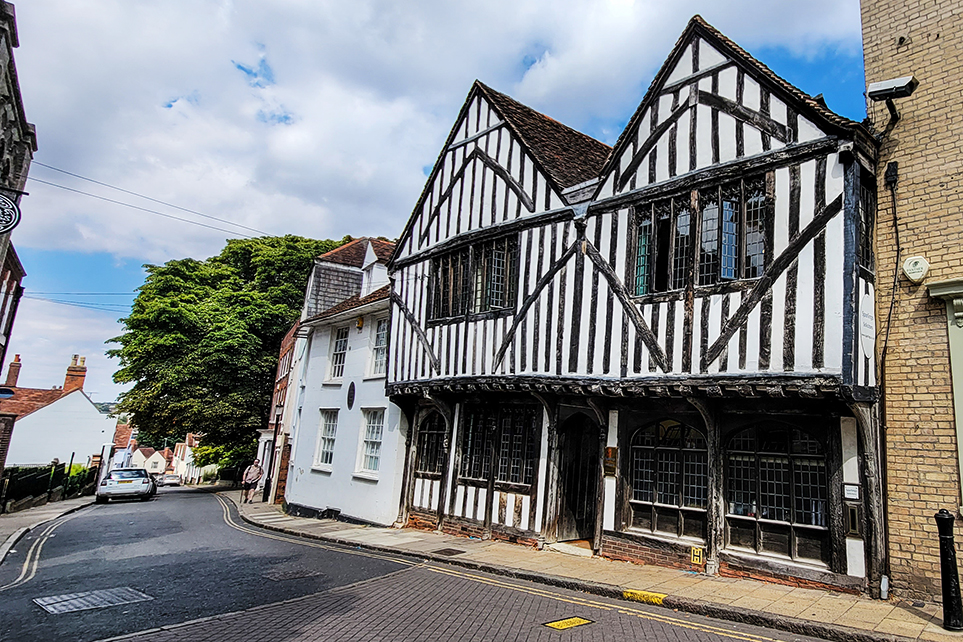
Dutch Quarter
Between those pretty houses on the river and the High Street of Colchester, you will find more colorful houses that make up the Dutch Quarter.
It was the 16th century home to Flemish Protestant refugees fleeing religious persecution following their defeat in a rebellion against Catholic Spain. The houses pre-date the Dutch arrival and were formerly inhabited by the Jewish community and other immigrants. The area still retains the original tall houses and the steep and narrow streets.
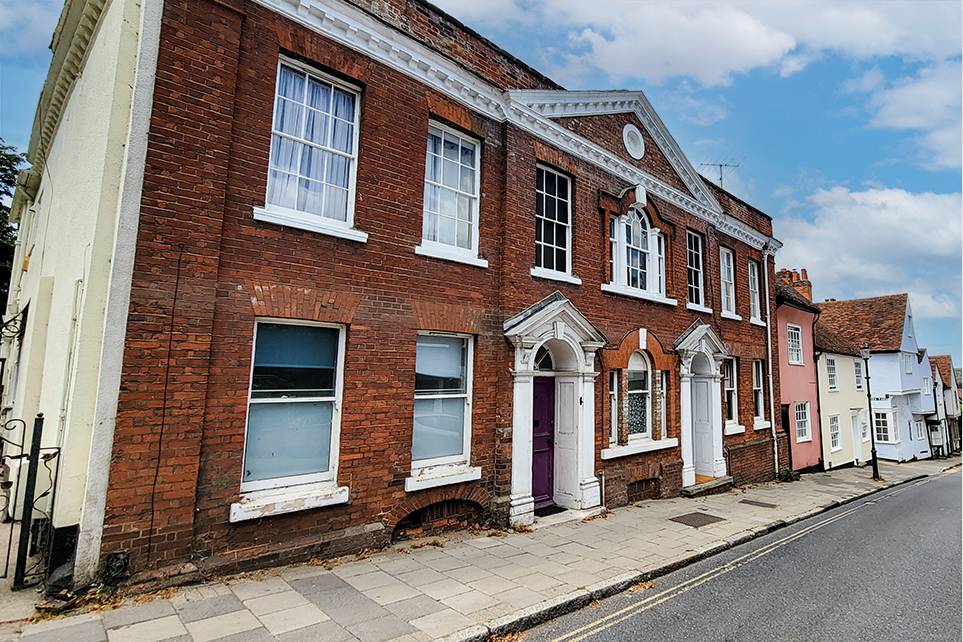
St. Martin Church
Near the Colchester Town Hall is the St. Martin Church, a spectacular medieval reminder with a massive, truncated tower. Many reused Roman bricks are identified in the brick, but there is evidence of 11th-century work. The church had its most significant expansion during the 14th century.
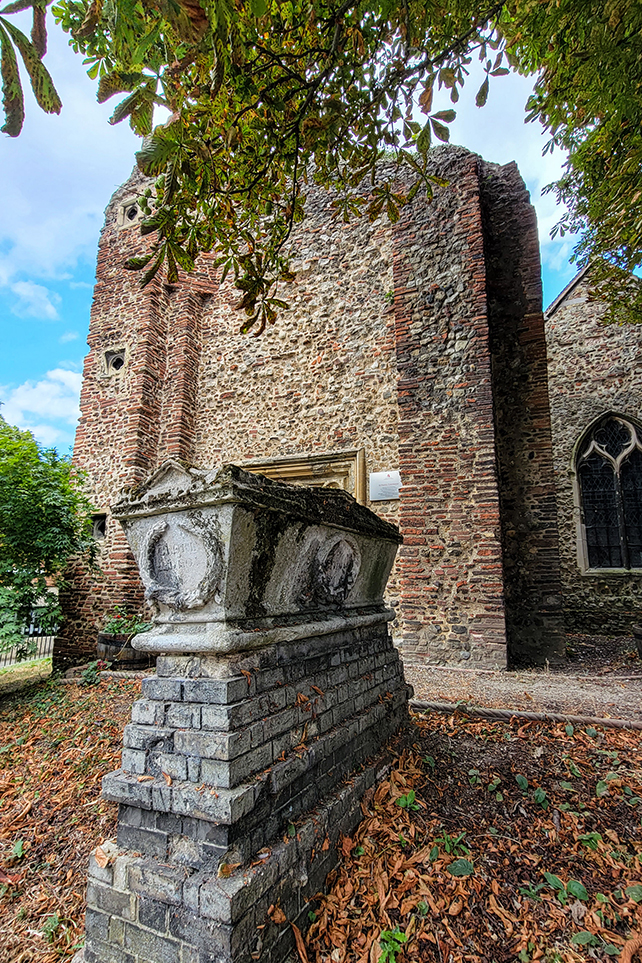
Roman Circus
Colchester was once the site of an ancient Roman chariot racecourse. The Circus was built in the second century AD and extended over a quarter of a mile long. It’s the longest and largest Roman building known in Britain. More than 8,000 people would have been able to watch the chariot races here.
Here you will see a replica of the starting gates and some of the foundations of the stands. It is a small museum that explains the history of its existence in Colchester and other Roman Circuses worldwide. The site is still being excavated by archeologists today.
Getting to the Roman Circus is about a 30-minute walk from the Colchester (North) train station. You can purchase tickets at the Visitor Center or book a guided tour.
- Admission: Adult £3 or £6 with a guided tour
Saint John’s Abbey Gate
Saint John’s Abbey Gate is a beautifully crafted gatehouse that was once part of St John’s Abbey. Built-in the 1400s, St John’s Abbey Gate is the part of the Benedictine abbey that exists today after the abbey was demolished during the 16th century Reformation.
Its architecture is unusual for Colchester because it uses East Anglian flushwork when the flint blocks are cemented flush to the wall in tight lines, creating a smoother surface reflecting the wealth and importance of the property.
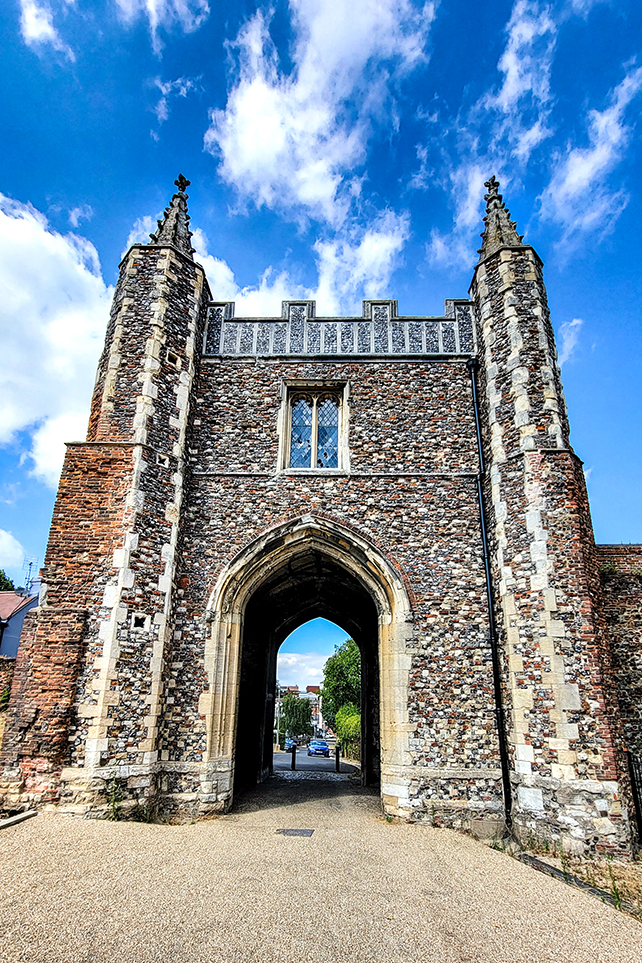
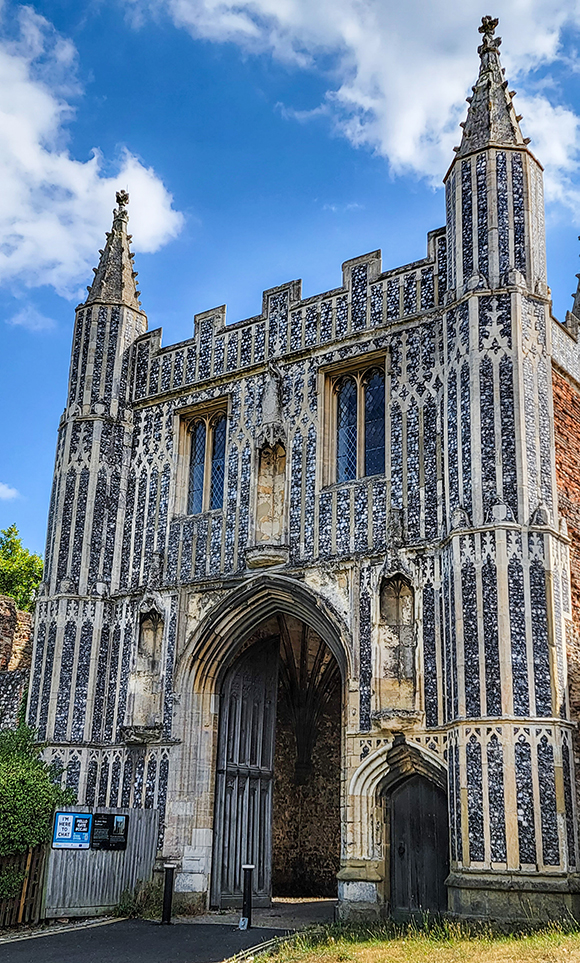
St. Peters Church
Dating back to Domesday, St. Peter’s Church is one of the few churches recorded in 1086. St Peter’s is the only church in Colchester, apart from Greenstead parish, mentioned in the Domesday document, but in references to the town, there is mention of seven priests.
A few alterations to the church were made in the 14th and 15th centuries, and then In 1692, it was shaken by an earthquake and was severely damaged. But according to archives, in the 18th century, the damaged area of the church was unsafe and demolished. So, for the most part, the church remained true to its original design.
In 1842, when the Vicarage burned the town, the church and many documents were destroyed. However, the church was restored, and rededication occurred in 1874. Then in the 20th century, some modest work and repairs were done to keep the church open.
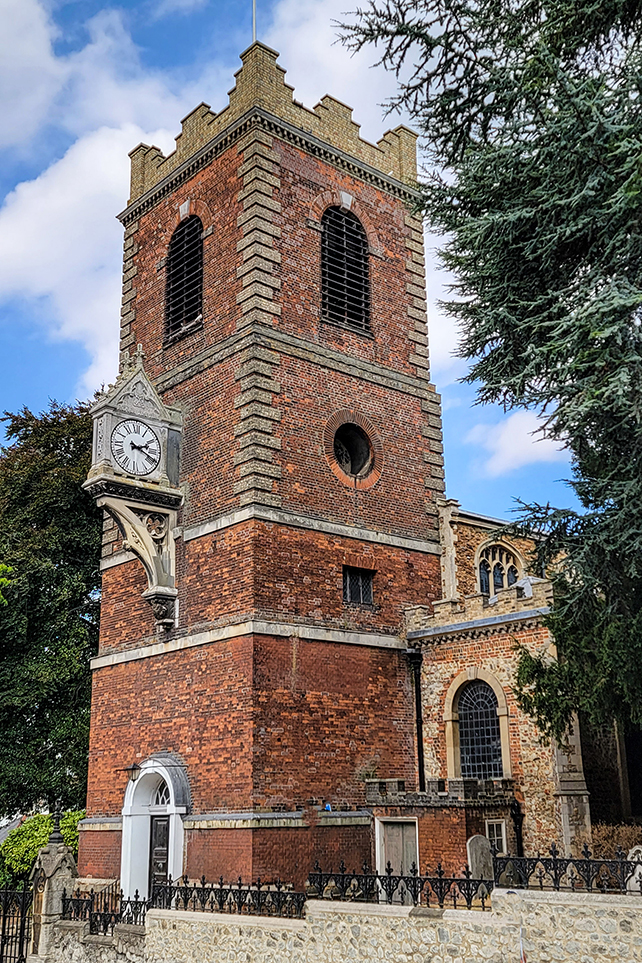
Saint Botolph’s Priory & Monastery
St Botolph’s Priory was once a medieval place of worship during the worship of the Augustinian rule (written around the year 400). Founded between 1093 and 1100, St Botolph’s Priory was one of the first Augustinian monasteries in England until it ended in 1536.
Much of the building was destroyed in the siege of Colchester in 1648. For the next 200 years, the congregations worshipped at All Saints Church (now the Natural History Museum).
Between the 18th and 19th centuries, the priory cloister was laid out as a garden, and the nave was used for burials. Then in 1837, the church you see standing next to the ruins was built in an architectural design to complement the Norman Priory.
The massive round columns and rounded arches are imposing, but since most of the monastery was destroyed, these ruins only give you a glimpse of what the site may have looked like.
- Hours: Suggest visiting during reasonable daylight hours.
- Admission: FREE
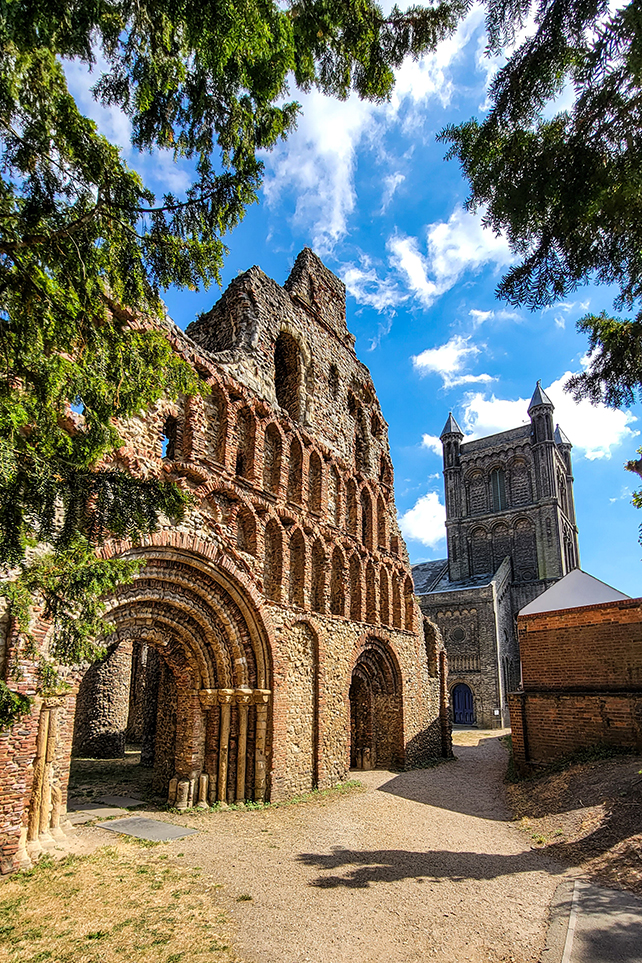
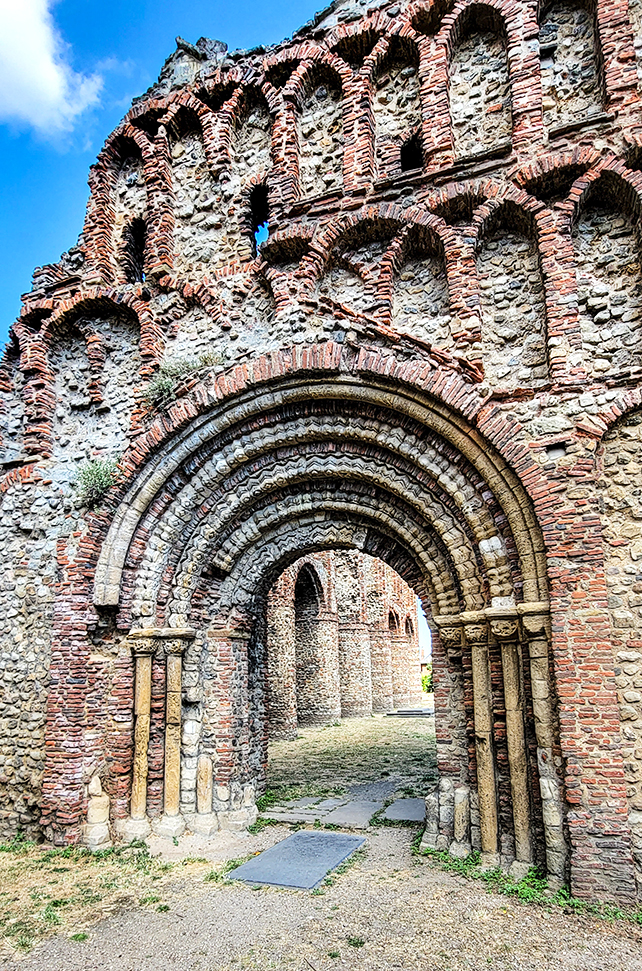
Jumbo Water Tower
Located not far from Mercury Theater and Balkerne Gate is the Jumbo Water Tower. Fun fact: the tower was nicknamed “Jumbo” after the London Zoo elephant as a term of derision by Reverend John Irvine, who was annoyed that the tower dwarfed his nearby rectory.
It has a unique design of Victorian architecture.
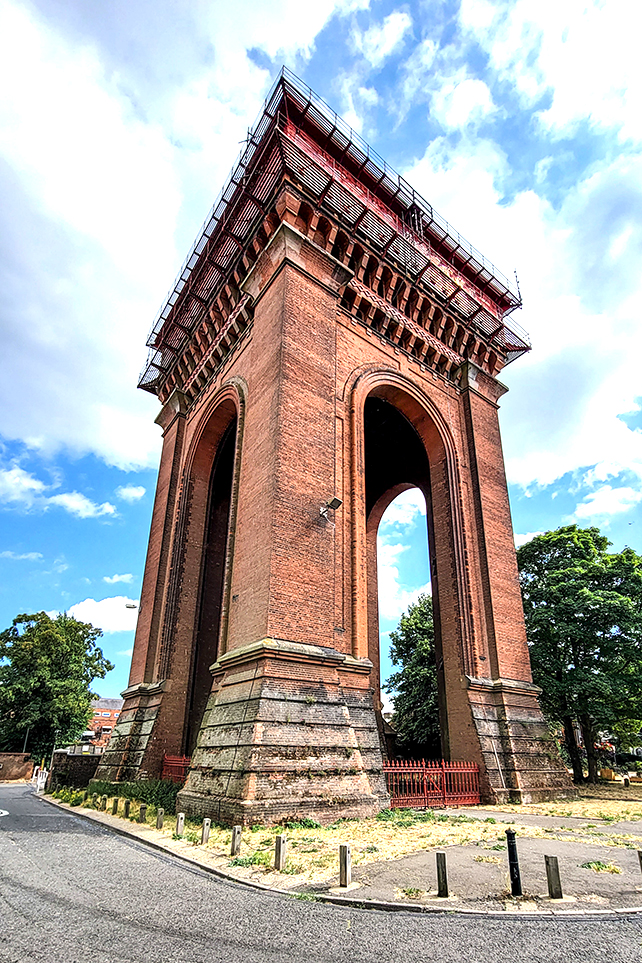
Balkerne Hill
Balkerne Hill is the best place to see Colchester’s Roman Walls, which were built from 65 to 80 AD after Queen Boudica’s revolt destroyed the town. The Roman Town Walls are the oldest and best preserved in Britain. Running almost 2 miles in length is also one of the longest.
If you want to see more of the Roman Wall, there is a two-mile circular walk (get the map here).
Balkerne Gate
Balkerne Gate is the oldest and best surviving Roman gateway in Britain, and it’s also known to have been the largest one. It was built into the town wall that went up shortly after Boudica attacked Colchester in AD 60 and gave access to the town from the road to Londinium (London).
The gate was made up of two arched passageways, wide enough for carriages, side-by-side, and much smaller arched footways on either side. It’s known to have been the largest because there were no other four entranced Roman gates in Britain. Unfortunately, most of the gatehouse has fallen, and now only the south footway arch remains, which you can still walk through.
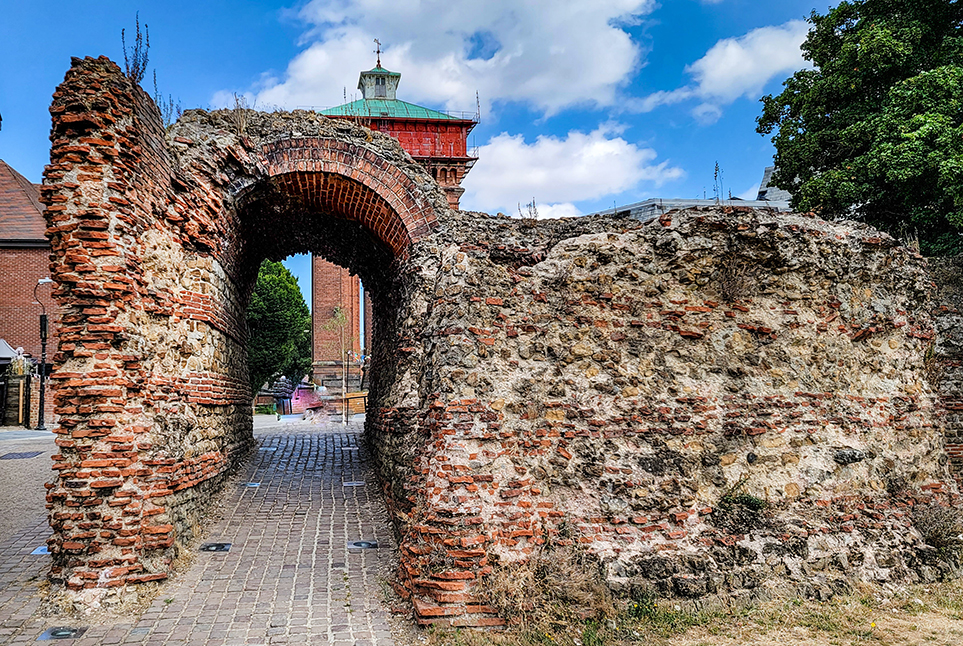
Mercury Theater
If you plan to stay a few days in Colchester, check out a performance at Mercury Theater. An evening out at the Mercury Theater is a perfect way to end a day of sightseeing or shopping in Colchester.
The theater is next to the Balkerne Gate and beside the “Jumbo” Water Tower.
- Look HERE for performances.
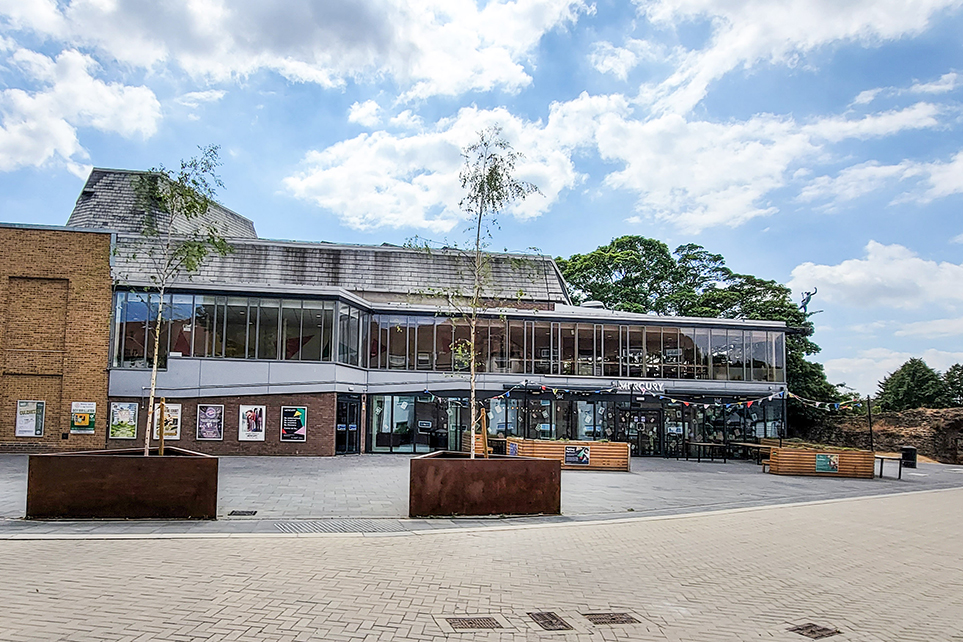
The Roman Church
On the side of a busy roundabout, you will find some Roman ruins called the Butt Road Roman Church and Cemeteries, although archeologists are divided about the purpose of the building. Dating from the 4th century, the ‘church’ and over 700 graves were uncovered in the 1970s and 1980s.
Originally the ruins were thought to be a Christian church because of the design and presence of graves. More recently, an alternative theory emerged that it might be a Mithraeum, a temple built for worshiping the god Mithras, because of its size, lack of windows, and evidence of feasting.
The church’s remains were laid out for the public in 1988. They added blocks of oak to show the position of the internal posts and strips of concrete to signify missing parts of the foundation.
To walk to the Roman Church, you must take a weird route because you can’t cross at the roundabout. However, there is an underpass to cross Southway from Headgate. It is free to visit the remains of the Roman Church.
St. Mary’s by the Wall
My next stop was St. Mary’s by the Wall, an old church. I wanted to visit this edifice built in the 15th century because of a nursery rhyme. Many people associate the Humpty Dumpty rhyme with an egg, but Humpty Dumpty was referring to a large cannon. Yes! During the Battle of Colchester in 1648, the cannon was sitting on top of the church tower, ready to defend the city. However, after a devastating blow to the tower from opposing cannon fire, Humpty Dumpty had a great fall and tumbled down, irreparably damaged.
The Historic Taylor Residence
In addition to Humpty Dumpty being associated with Colchester. “Twinkle, Twinkle Little Star” was written by a young lady named Jane Taylor in 1806.
I read the plaque on the building where she lived and composed the song. It was one of my many discoveries as I traversed the streets of the old part of town. What else would I find?
Roman Theatre
Roman Colchester was home to three theatres. You can see the underground remains of one under a house on Maidenburgh Street in the Dutch Quarter. On the street, the darker paving shows the outline of the theatre’s walls, which would have seated 3,000 spectators.
This theater dates back to the 2nd – 3rd centuries. Experts believe it was the theatre mentioned in Tacitus‘ account of the Boudican attack on Colchester.
- Hours: Open all year
- Admission: FREE
East Anglian Railway Museum
Spread across 10 acres is the East Anglian Railway Museum. The museum provides a unique history of the region’s railways.
Tour the Victoria station, supply sheds, and signal boxes to understand how passengers and freight were transported in the past. In addition, you can check out steam and diesel locomotives, vintage carriages, and wagons.
In the heritage center, you get insight into running the railways behind the scenes. There is also the working restoration shed where volunteers strive to bring historic engines and rolling stock back to life.
The Platform 2 Café is on-site if you become hungry, it serves lunches, tea, coffee and cakes.
- Hours: Weekends, Wednesdays, and Bank Holidays: April-October 10:00 – 17:00, November – March 10:00 – 16:00
- Admission: Adult £8
Chappel Railway Viaduct
Take a scenic walk near the Victorian-era Chappel Viaduct, which is still used today by a local railway line. Its 32 arches span an impressive 1,135 feet. If you get parched, there is a pub located conveniently nearby.
Lion Walk Church
In the first half of the 17th century, a group of residents broke away from the Established Church to worship as the first Nonconformist Church.
For many years the congregation worshiped at different homes. Then, in 1862 a Victoria Gothic-style church was built, causing a great deal of controversy dubbed a “Steeple House.”
By 1940 the Caen stone church was deteriorating. In 1972 the decision was made to demolish and rebuild the church.
While shopping in Lion Walk, the center of town, you will see this lovely steeple standing tall.
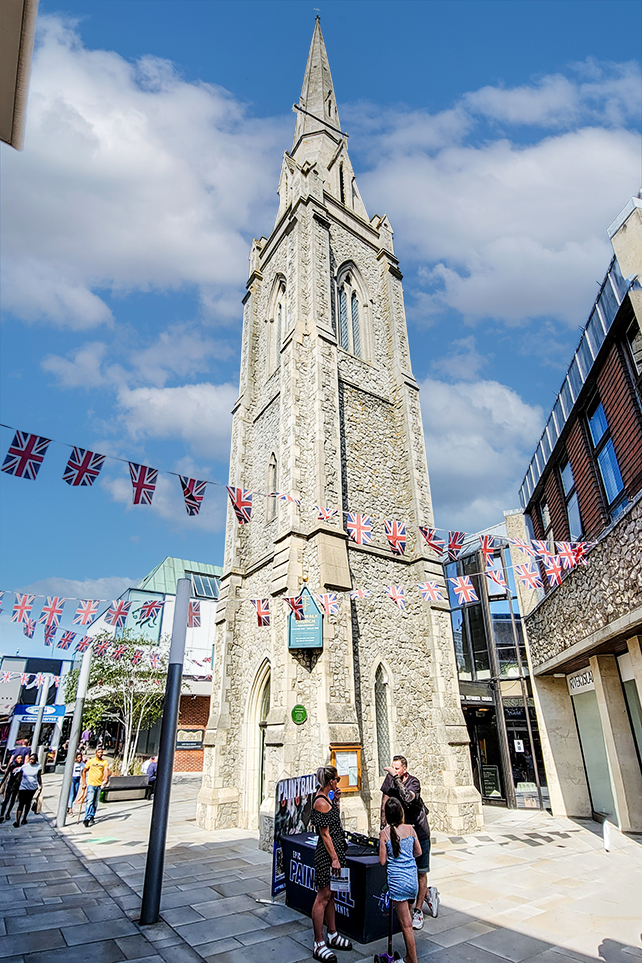
Colchester Shopping
There are plenty of options for shopping in Colchester. Along with the shops along the High Street (and many other roads branching off around the town!), there are two main shopping centers. Culver Square Shopping Centre and Lions Walk Shopping Centre.
Sir Isaacs Walk is another cute little street with lots of smaller shops and little cafes.
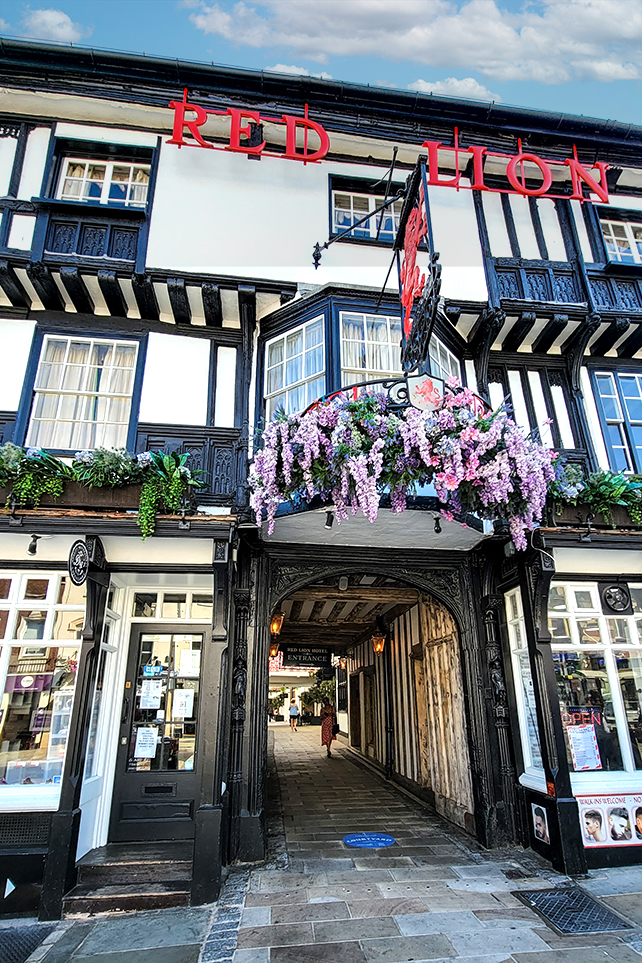
Tiptree Jam Museum and Tearooms
Visit the world-famous Tiptree Jam Museum not far from Colchester, producing jams since 1885. Wilkin and Sons have been making jams, sold in over 70 countries.
Located on the edge of Tiptree village, approximately 20-minutes from Colchester.
The museum offers understanding into over 135 years of documents and life in producing Wilkin & Son’s Tiptree jam products. Take the time to visit the tearoom and enjoy many conserves with afternoon tea.
- Hours: Summer Monday – Saturday, 9.30 am – 4.30 pm, Sunday 10 am – 4.30 pm; Winter Every day from 9 am – 4 pm
- Admission: FREE
Getting There
Colchester has two train stations, Colchester (North Hill) and Colchester Town. The town station is a branch line closer to the shops and castle. Colchester station is on the main line so is serviced by more trains.
I think Colchester is a fantastic option for those traveling in Essex. The town offers many free things to see and do for those on a budget. In addition, Colchester is a great day trip from just about anywhere, or if you want a weekend getaway, make this your perfect destination.
Enjoy your travels! Please read my blogs about other exciting places around the world at Traveling Lens Photography.
If you want to read more follow me on Facebook, Instagram, or Pinterest as I share my journey.
Happy Travels!




